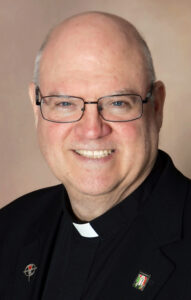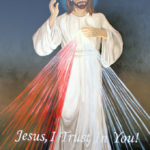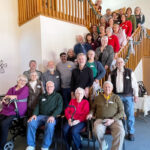By Fr. Jim Betzen
When I was the pastor of Sacred Heart and St. Patrick’s churches in Sedalia, Mo., I saw an advertisement in Maryknoll magazine for a retreat called “Remembering the Martyrs.”
Archbishop Oscar Romero was one of the martyrs. Working with El Salvadorans in Kansas City and Sedalia, I had come to know about the life and death of Archbishop Romero and yearned to visit the places where he lived, worked and was martyred. I also wanted to visit the land where many of my El Salvadorian parishioners came from.

The retreat in January 2011 was a pilgrimage to the places where holy men and women worked and were martyred in Guatemala and El Salvador. These martyrs were Father Rutilio Grande, Archbishop Oscar Romero, Jean Donovan, Sister Ita Ford, Sister Maura Clarke, Sister Dorothy Kazel, Father Stan Rother and Archbishop Juan Jose Girardi. The first half of the retreat was spent in El Salvador and the second half in Guatemala.
I flew to Guatemala City, where I joined about 20 other priests and a few religious brothers for our retreat. We were taken to the Maryknoll mission house which had individual rooms, a large community room where we received lectures, a dining room and a chapel.
The next day, we boarded a minibus and headed to El Salvador to a retreat house on the outskirts of San Salvador. The following day, we visited the hospital where Archbishop Romero worked as a chaplain and the hospital chapel where he was shot while at the altar March 24, 1980.
We visited his home near the chapel, where his personal priestly articles were displayed. Also displayed were the clothes and vestments he wore when he was martyred. Archbishop Romero was an advocate for justice and against the violence of the military. Through his homilies on the radio, his message reached many Salvadorans.
We visited the Cathedral of San Salvador where Archbishop Romero is buried, in a tomb in the hall below the church, and listened to a Maryknoll missionary tell about the funeral. Visiting these sites of Archbishop Romero was the highlight of the retreat. Then, we went to the wall of Truth and Justice, completed in 2005. It has the known names of those who died in the civil war and names of towns where massacres occurred.
Another trip was to the countryside in El Salvador where Jean Donovan and Sisters Ita Ford, Maura Clarke and Dorothy Kazel were buried after being murdered Dec. 2, 1980. They had been buried in a pasture before their bodies were found and returned to the United States. We saw a marker with their names on it and a chapel built in their memory. These missionaries worked with the poor.
Our last trip in San Salvador was to the University of Central America where six Jesuit priest professors, their housekeeper and her daughter were assassinated Nov. 16, 1989. We saw the museum to the martyrs of El Salvador and visited the university chapel where the eight martyrs of UCA were buried. On the sanctuary wall was a symbolic mural of the injustice and on the back wall was the way of the cross, depicting practices of torture.
Returning to Guatemala City, we prepared for a trip to the Guatemala highlands. We went to the parish of Santiago Atitlan where Fr. Rother was pastor. He was martyred July 28, 1981, in his rectory. A diocesan priest from the Diocese of Oklahoma City, he was sent to Guatemala as a missionary. In Santiago Atitlan he built a farmers’ co-op, school, hospital and the first Catholic radio station, which provided catechesis to the even more remote villages.
One can read about his life in the biography “The Shepherd Who Didn’t Run.” While in Santiago Atitlan, our retreat group attended Sunday Mass which included a homily about Fr. Stan’s life. We visited the room in the rectory where he was martyred and the tomb in the church where his heart is buried. I was very impressed with his life and martyrdom — myself, being a pastor to Hispanic parishioners and coming from southern Kansas.
Finally, during a trip to the human rights office of the Diocese of Guatemala City, we saw the work of Bishop Juan Jose Girardi. He spent years interviewing survivors of war crimes committed during the long civil war for the Recovery of Historical Memory project. The findings published in the report “Nunca Mas” (Never Again) identified war crime perpetrators. Bishop Girardi, an advocate for justice, was martyred April 26, 1998. We visited the garage where he was beaten to death. His tomb is in the cathedral.
I thank God and the Maryknoll missionaries who made possible this retreat/pilgrimage to El Salvador and Guatemala. Hopefully, we will remember these martyrs for years to come and pray to them in our continuing work for justice to native peoples and immigrants today.
(Fr. Jim Betzen, C.PP.S., is pastor of St. Mary of the Visitation Parish in Ottumwa.)











